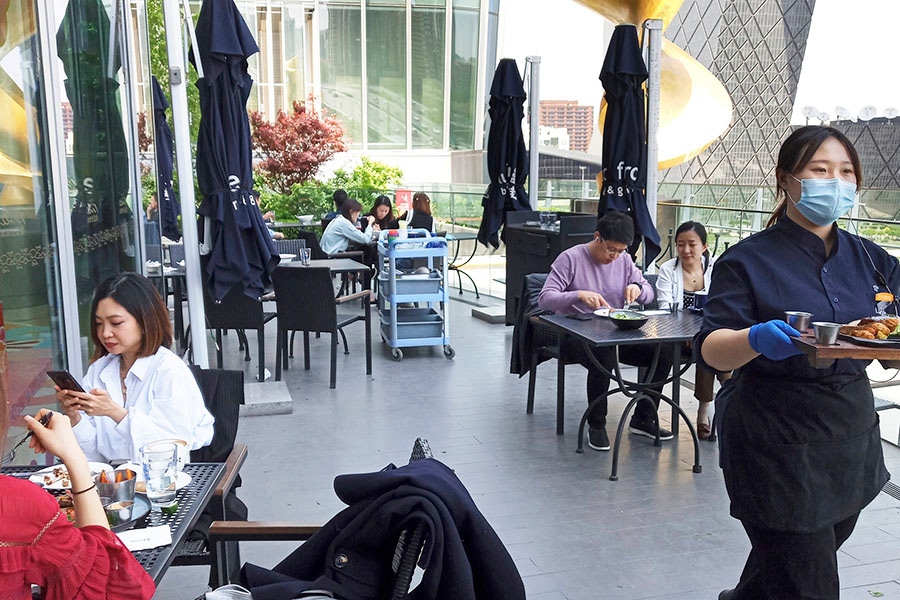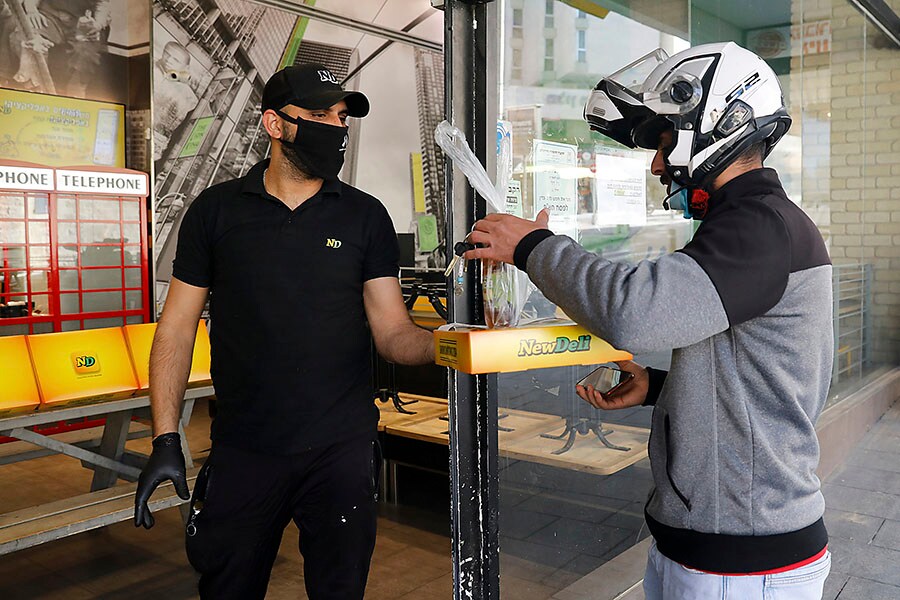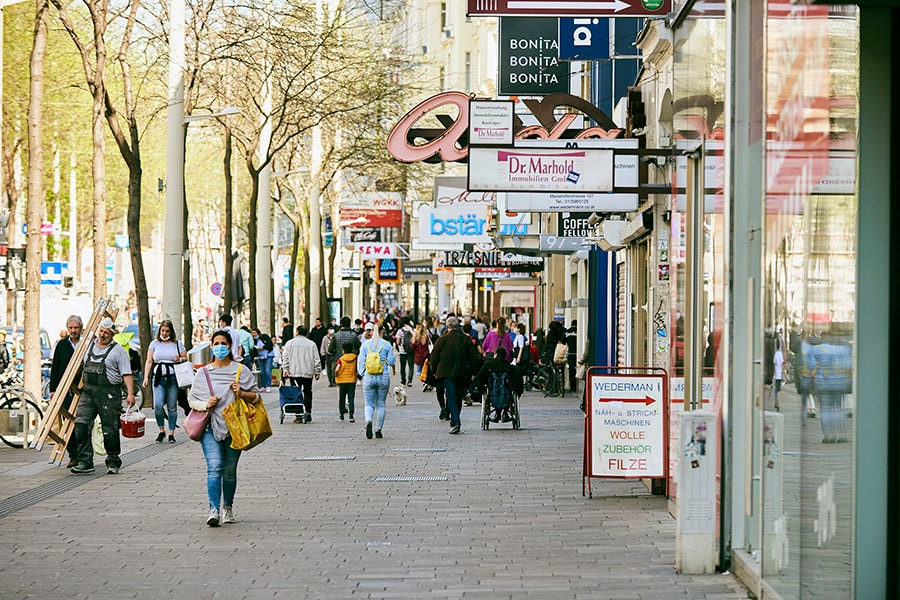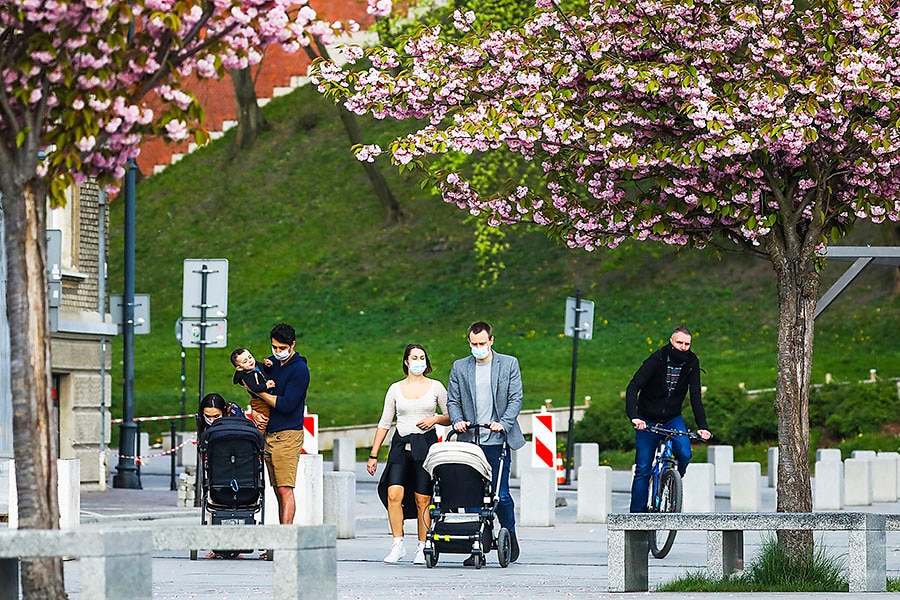
What life looks like after the lockdown
Countries that have eased the lockdown give us a glimpse of the new normal, once the restrictions are rolled back
 Seen here is a restaurant in Beijing. The capital of China started inching back to normalcy in mid-April, with its restaurants and malls reopening
Seen here is a restaurant in Beijing. The capital of China started inching back to normalcy in mid-April, with its restaurants and malls reopening
Image: Abhishek G Bhaya
Zhang, a freelance interior designer from Beijing, was in her hometown of Heze to celebrate Chinese New Year when the city of Wuhan, the first epicentre of the novel coronavirus outbreak, was put under a watertight lockdown to combat the pandemic that would later affect over 30 lakh people across continents. As the government amped up controls on the rest of the country and clamped down on travel, Zhang’s return to Beijing was delayed. When she did manage to take the train back on March 19, she had to upload every minute detail of her whereabouts on an app before boarding and take hourly temperature checks through her nearly-four-hour journey. Once in Beijing, Zhang went into immediate self-isolation. “I didn't even go down to the garden of my building compound to collect my delivery orders,” she says.
In mid-April, Beijing was inching back to normalcy—its parks had opened, so had malls and restaurants, and traffic on its ring roads, a barometer of the city’s frenzied pace, had picked up to two-thirds of normal. Zhang, too, had gone out to socialise with her friends for the first time in two-and-a-half months. But the battle scars of a public health crisis remained—and not just in the masks they were mandated to wear every time they had to step out.
In the new world order following the pandemic, Zhang and her friends couldn’t just walk into a restaurant and grab a table—they first had to book one through an app to eliminate crowding on the spot. Most restaurants that had reopened had reduced the number of tables and set them six feet apart; enclosed, air conditioned spaces were out and seating was arranged open-air or on the rooftop. And every time anyone had to enter a public place, or even leave or return to their own apartment compounds, their temperature was taken. Thermal scanners were as ubiquitous as face masks and a green health code on the smartphone, tracked through an app, the new masterkey.
Despite the app triggering debates over heightened state surveillance by tracking citizens, it’s this code—akin to a health certificate—that allows Husain Barma, the head of chemistry department at Shanghai Qibao Dwight High School, into his gym every day. Barma has to pre-book his exercise slot and keep his mask on through his routine. “If you take it off because you are perspiring, they will ask you to put it back,” he says. “Besides, they’ve turned off every alternate treadmill so you can’t run on adjacent ones.”
In the DiDi cabs that Barma and his wife frequently use, or that Zhang ordered to travel the 7-km stretch between her home in Andingmen and Beijing’s entertainment district of Sanlitun, drivers hold the right to refuse a ride if the passenger isn’t wearing a mask. Seating upfront isn’t encouraged, a plastic sheet separates the front from the back, and windows are rolled down during the journey. Says Zhang, “Public transport is available, but I’d rather travel in a cab because there are more people on the bus and the metro.”
Beijing has now lowered its alert level and, starting April 30, is exempting domestic travellers from low-risk areas from the 14-day quarantine; it has also opened up a few tourist spots. Zhang, too, says she is no longer scared of the highly-infectious coronavirus that affected nearly 84,000 people in her country and killed over 4,600. “I’m just respectful of the new normal,” she says.
 People go fishing at Bucklands Beach in Auckland, New Zealand, in April, after the government eased lockdown measures to let people widen their social bubbles
People go fishing at Bucklands Beach in Auckland, New Zealand, in April, after the government eased lockdown measures to let people widen their social bubblesImage: Phil Walter / Getty Images
*****
(This story appears in the 30 November, -0001 issue of Forbes India. To visit our Archives, click here.)




 Restaurants in Israel have been allowed to open for takeaways. But despite easing restrictions, the country was put under complete lockdown and curfew on April 28-29 for Independence Day
Restaurants in Israel have been allowed to open for takeaways. But despite easing restrictions, the country was put under complete lockdown and curfew on April 28-29 for Independence Day Poland, which had 12,000-odd cases of the coronavirus, began easing regulations on April 18, but people must step out wearing masks
Poland, which had 12,000-odd cases of the coronavirus, began easing regulations on April 18, but people must step out wearing masks People have started venturing out in Copenhagen, Denmark, after norms were recently relaxed
People have started venturing out in Copenhagen, Denmark, after norms were recently relaxed



